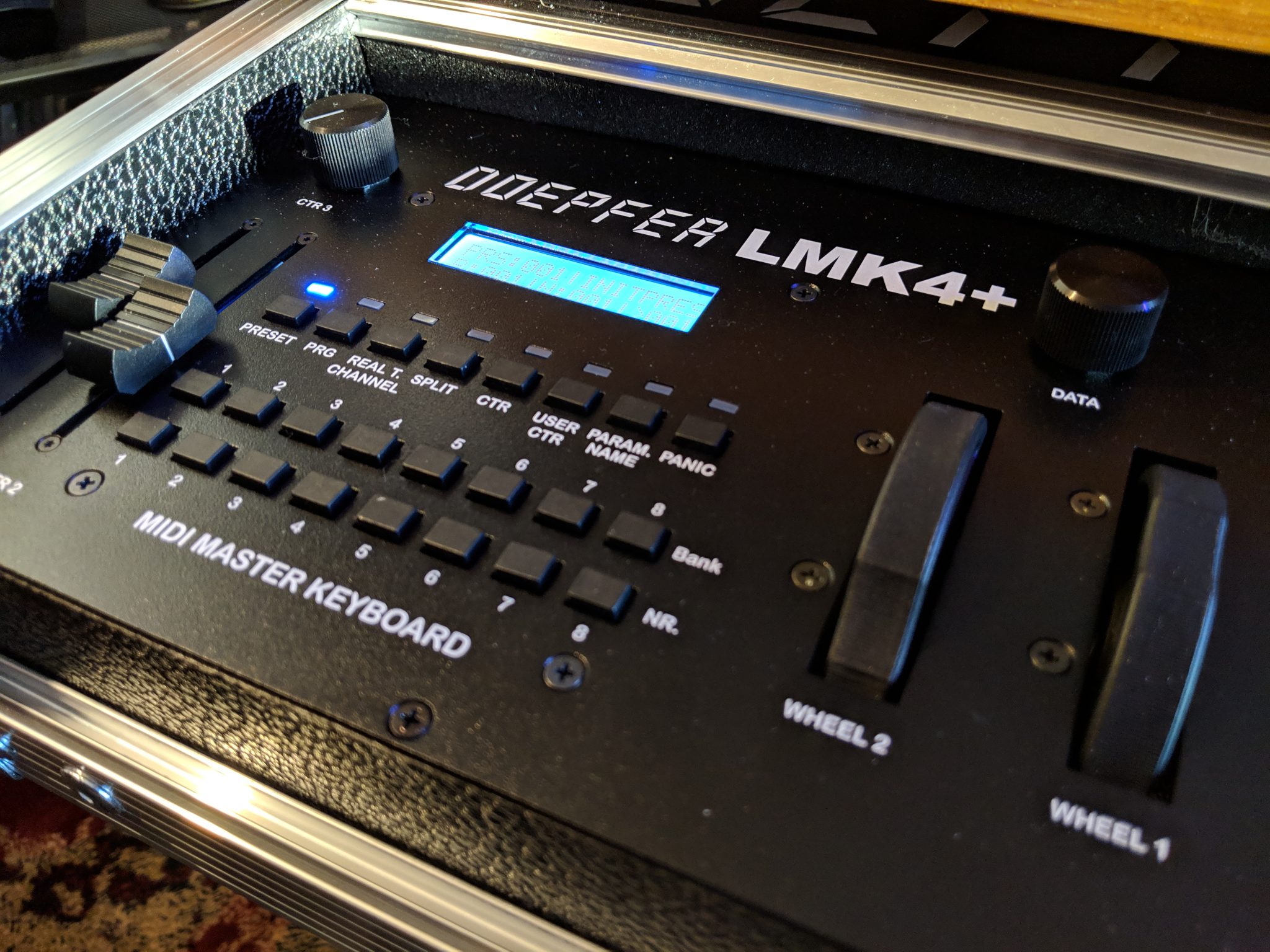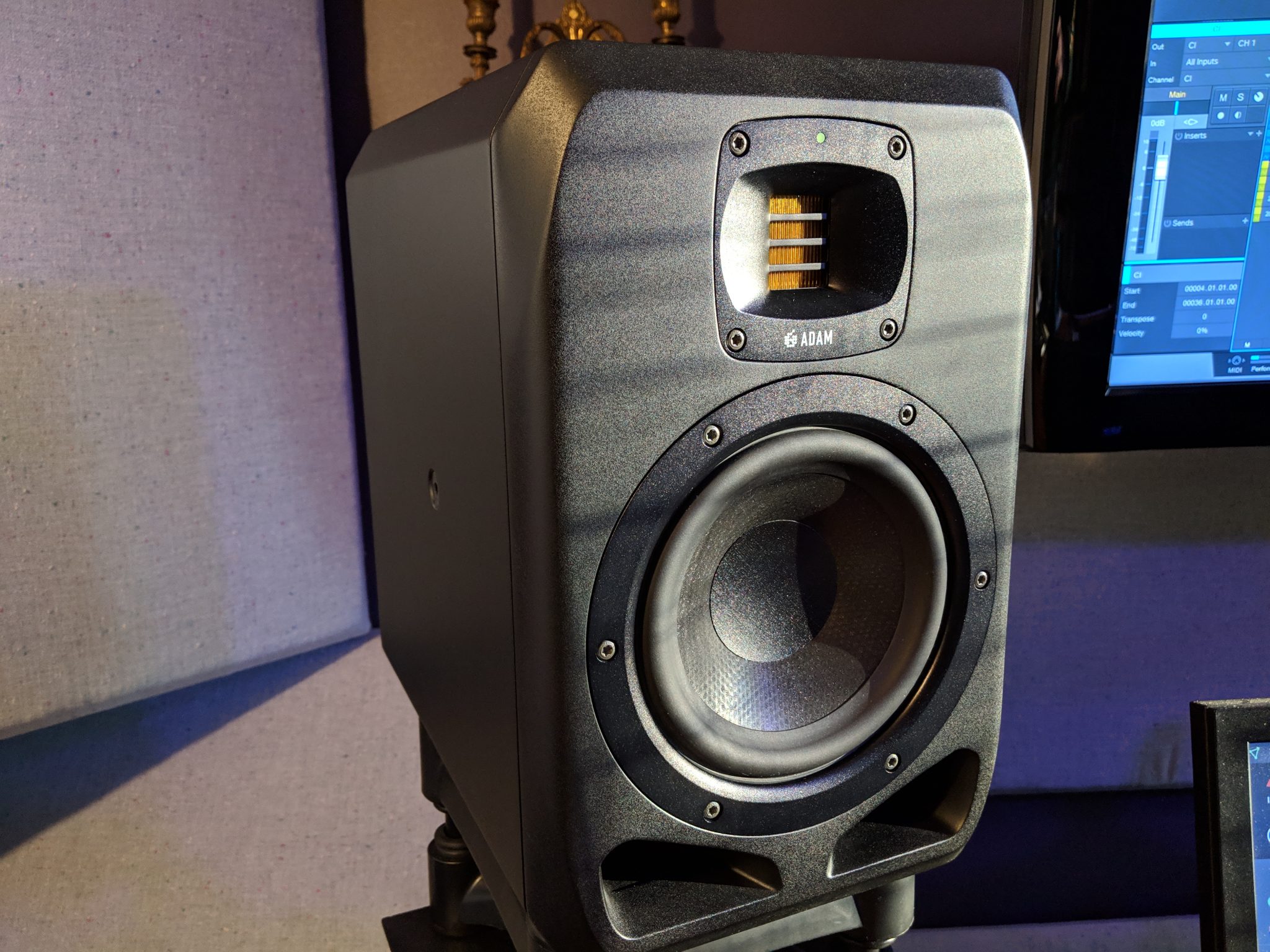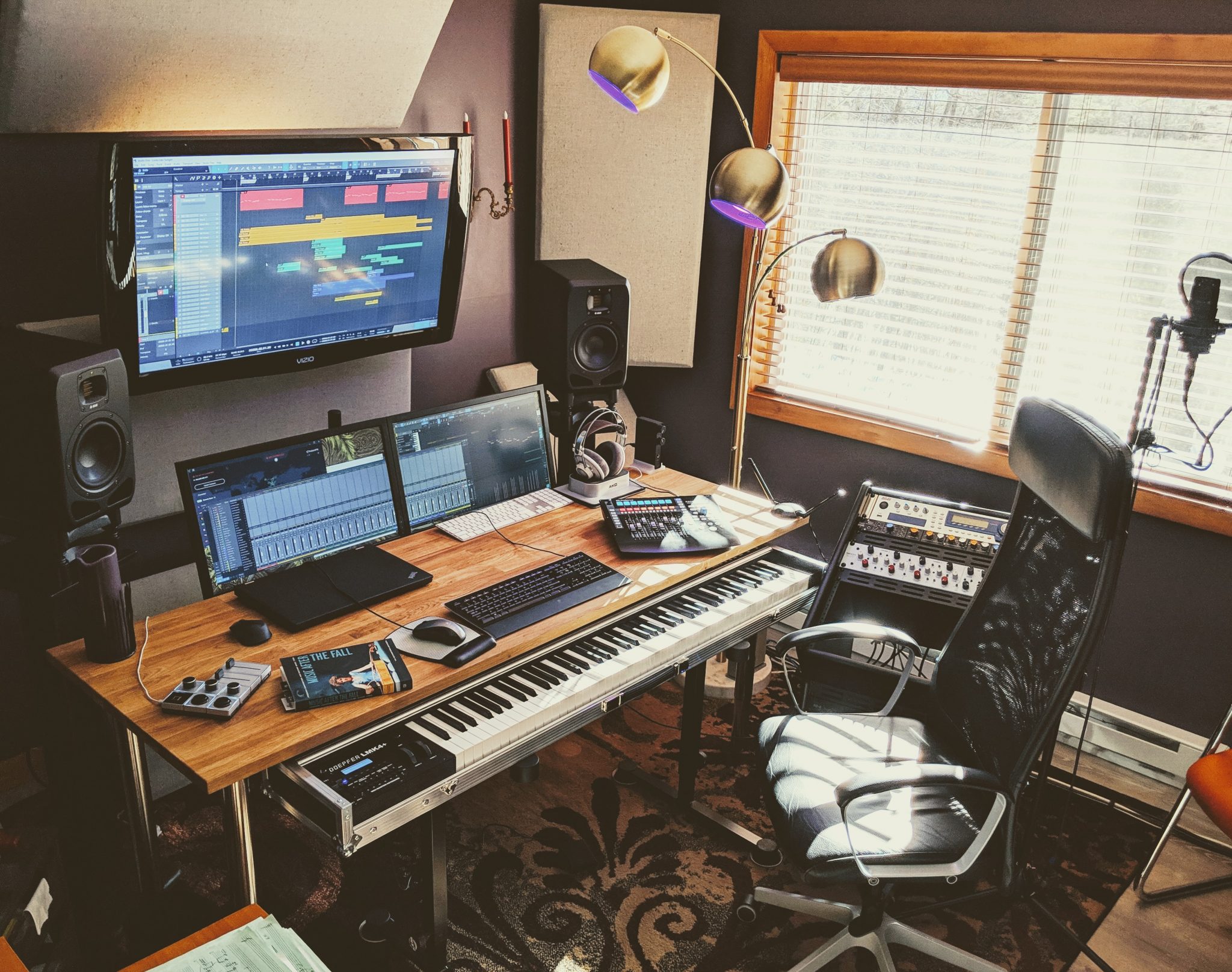Author: Greg
-
2 Channels Deep
Last March I reconfigured the studio to accommodate a wide 4 channel stereo speaker setup.
I began developing several projects for this front-facing semi-circle, but found they translated horribly when condensed to stereo. Ironically, this was a sign that they were conceived well, but I found it frustrating that they weren’t portable.
Happily, this March brought with it several studio upgrades along with a return to stereo monitoring.

In anticipation of future live performances, I upgraded my master controller from the Roland RD-700GX to the Doepfer LMK4+ (TP/40GH).
Happy fingers. But by far the biggest studio upgrade involved the bits that make the air move — the speakers.

Great googily moogily.
When I first powered on these Adam S2Vs I couldn’t pull away for hours. They are a miracle of engineering and a revelation for any willing pair of ears.
-

2 Channels Deep
Last March I reconfigured the studio to accommodate a wide 4 channel stereo speaker setup.
I began developing several projects for this front-facing semi-circle, but found they translated horribly when condensed to stereo. Ironically, this was a sign that they were conceived well, but I found it frustrating that they weren’t portable.
Happily, this March brought with it several studio upgrades along with a return to stereo monitoring.

In anticipation of future live performances, I upgraded my master controller from the Roland RD-700GX to the Doepfer LMK4+ (TP/40GH).
Happy fingers. But by far the biggest studio upgrade involved the bits that make the air move — the speakers.

Great googily moogily.
When I first powered on these Adam S2Vs I couldn’t pull away for hours. They are a miracle of engineering and a revelation for any willing pair of ears.
-
Vampyr: Initial Pilot Testing
With the first 20 minutes of demos tracked in total isolation, we bounced a rough mix (minus vocals) and presented the result to a few friends we know to be interested in unusual music and vampires.
Our goal was to represent a general idea of how the finished project might feel and gather feedback. So far, we’ve learned two important things:
1) The Concept Is Strong
One of our initial concerns was whether or not audiences would accept the back-to-back juxtaposition of Alison’s smart and edgy (but still relatively accessible) songwriting with my highly experimental works for piano and computer that are (at best) quite challenging for most listeners. Not to worry! If we can manage to keep the vibe evolving with a certainly regularity, this is actually one of the more attractive features of the project.
As far as I can tell, the reason for this is that the film (which is full of incredible visuals) provides viewers with a potential reading of the musical gestures that’s tied to a clear narrative. The result is that sound cues that might otherwise appear disconnected feel motivated by action on the screen.
2) Some Accidents Are Better Than Others
And that brings me to one of the more unexpected discoveries with this project. We’re mostly adapting existing music to accompany the film and have found that if we’ve done a decent job pairing the mood and flavor of a piece of music with a specific scene, almost inevitably, at least a few key sounds and gestures will line up with the visuals.
Of course these are accidents, but during our pilot testing we found that some people reported a very strong (and often unexpected) connection between these unplanned coincidences. This meant that when a related action occurred on screen and the audio cues were missing, audience members felt their absence and wished they would return in some way.